25% Discount for Any Product or Service!
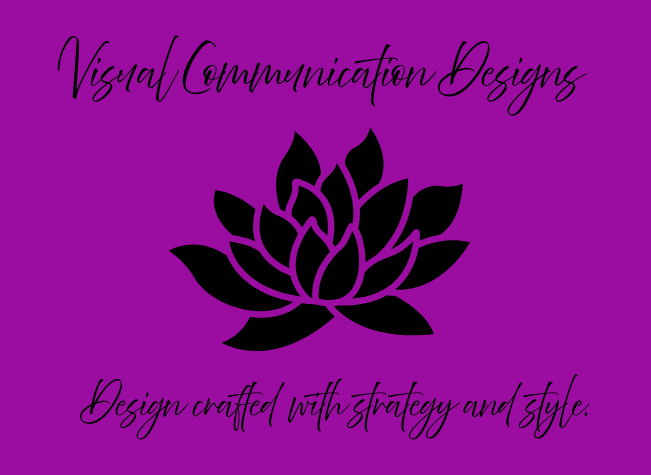

"Design must seduce, shape, and perhaps more importantly, evoke an emotional response." April Greiman
Welcome to Visual Communication Designs, where art meets strategy. Discover how compelling visuals can shape perceptions and influence decisions in today's fast-paced digital landscape. In a world where attention spans are measured in seconds and first impressions happen at the speed of light, the power of visual communication has never been more critical. Every day, we're surrounded by carefully crafted visuals, from the apps on our phones to the billboards we pass, the packaging that catches our eye, and the websites that guide our decisions.
Whether you're a student exploring career possibilities, a professional seeking to expand your skills, or simply curious about the visual world around you, this site serves as your gateway to understanding one of today's most dynamic and influential fields. Here, you will discover how visual designers shape the way we see, think, and interact with information. You'll explore the principles that make designs work, the tools that bring concepts to life, and the career paths that await those who master this essential modern skill. Ready to see the world through a designer's eyes? Let's begin your journey into the fascinating realm of visual communication design.
What is Visual Communication Design?
Visual communication design is the process of using visual elements such as images, typography, color, and layout to convey ideas, information, and emotions to an audience. It blends visual arts and graphic design to create effective messages for various platforms, including branding, websites, motion graphics, and interactive user interfaces. The goal is to simplify complex concepts, capture attention, and facilitate meaningful connections between a creator and their audience. Visual communication design, often used interchangeably with graphic design, is a specialized field that focuses on conveying messages and information through visual elements. Visual communication design strategically uses visuals to communicate ideas, evoke emotions, and tell stories in a way that resonates with a specific audience. Think of it as a blend of art, technology, and communication skills to create impactful visual solutions.
Key Elements of Visual Communication Design
Typography: Choosing fonts, sizes, and styles that are legible, visually appealing, and support the overall message.
Color: Utilizing color psychology to evoke specific emotions, draw attention to key areas, and reinforce brand identity.
Imagery: Incorporating photos, illustrations, icons, and other visuals to add depth, clarify ideas, and create a visual narrative.
Layout and composition: Arranging visual elements strategically to create a clear visual hierarchy, guide the viewer's eye, and ensure the message is easily understood.
Visual storytelling: Crafting narratives and conveying emotion and meaning through sequences of images and videos.
Importance and Impact:
Enhanced Clarity: Visuals can break down complex ideas into easily digestible parts, making information more accessible and understandable.
Increased Engagement and Retention: Visuals capture attention, maintain interest, and make information more memorable, leading to better recall and comprehension.
Building Brand Identity: Visual elements such as logos, colors, and typography help create a consistent and recognizable brand image, fostering trust and recognition.
Reaching Diverse Audiences: Visual communication can transcend language barriers, enabling messages to be understood by a broader audience.
Graphic Design: Logos, brochures, advertisements, and website design.
Photography: Product shots, lifestyle images, and advertising imagery.
Video and Animation: Explainer videos, animated commercials, and social media ads.
Data Visualization: Infographics, charts, and graphs to represent complex data visually.
Illustrations and Icons: Visual representations of ideas, objects, or actions used in websites, apps, and educational materials.
Visual communication is storytelling—how we communicate information and create experiences across a range of visual mediums. It can be found within design, illustration, photography, art, and advertising; it could be an image, a quote, a campaign, a film, or an animation. Visual communication design uses the power of visuals to effectively communicate messages, create engaging experiences, and leave a lasting impression. Visual Communication Design is evident in many aspects of our daily lives.
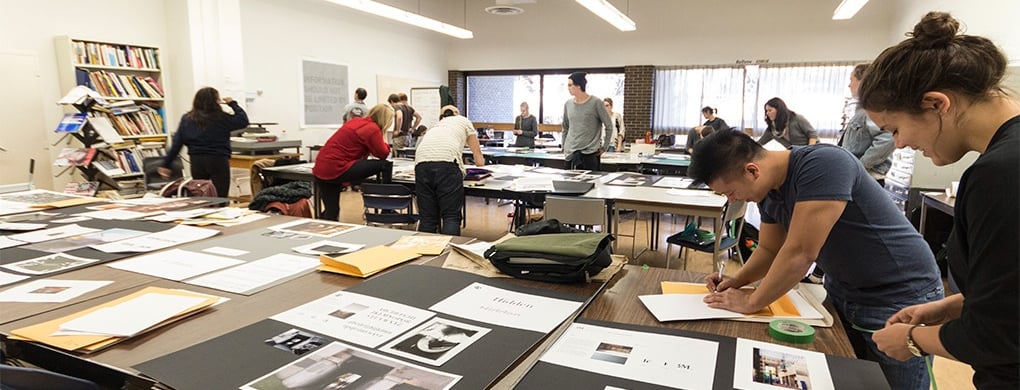

A Powerful and Essential Discipline
Why Visual Communication Design Is So Important:
Enhances Comprehension and Retention: Humans are highly visual creatures, processing images and visual information significantly faster than text. By using visuals like infographics, charts, and videos, VCD can simplify complex information, making it easier to understand and remember. Research suggests people retain 65% of visual content after three days, compared to only 10% of written content.
Boosts Engagement and Attention: In today's fast-paced, information-saturated world, capturing attention is critical. Visuals are inherently more engaging than text, as they draw the eye and hold interest. Studies show that visuals can boost engagement by over 650% and lead to 35% more interaction compared to text alone.
Transcend Language Barriers: Visual communication can overcome linguistic differences by utilizing universally recognized symbols, icons, and imagery. This allows for effective communication with diverse audiences across cultures and languages.
Evokes Emotional Responses and Builds Connection: VCD can evoke emotions, foster empathy, and establish deeper connections with the audience. This emotional connection is crucial for building brand loyalty, inspiring action, and creating memorable experiences.
Reinforces Branding and Identity: Visual elements such as logos, color schemes, typography, and imagery are crucial for building a strong and recognizable brand identity. Consistent use of these elements across all communication channels reinforces brand messaging, builds trust, and enhances brand recognition.
Data Visualization: Using graphs, charts, and infographics to simplify complex data and make it easily understandable.
Education: Creating visual aids like diagrams, charts, and presentations to enhance learning and retention.
Information Design: Designing visuals that explain procedures, processes, or complex concepts clearly.
Visual communication design transcends aspects of our lives, from daily interactions to business and education. It is a discipline focused on conveying messages and information through visual elements, capturing audience attention, enhancing understanding, and leaving a lasting impression. Visual language is used to communicate effectively and efficiently, and it is a powerful tool for organizations, businesses, and individuals to connect with audiences, convey messages, and achieve their communication goals. It operates at the intersection of art, technology, and communication, aiming to create compelling visual messages. This field has evolved significantly, incorporating traditional graphic design practices with digital media, interactive interfaces, and data analytics. Modern visual communication design not only focuses on aesthetics but also on engaging diverse audiences through user-centered design and multisensory experiences.
Visual communication design is a powerful and essential discipline that influences how people interact with information and the world around them. Mastering its elements and principles allows designers to create impactful and memorable visual messages across various platforms and applications. Visual communication design is an essential discipline that transcends various aspects of our lives, from daily interactions to business and education. It is focused on conveying messages and information through visual elements, capturing audience attention, enhancing understanding, and leaving a lasting impression. A well-executed design can influence perceptions, evoke emotions, and drive behavior, all within milliseconds. The effectiveness of visual design extends to every aspect of our lives, from brand recognition to user experience. Visual design extends far beyond marketing and is a critical component in numerous fields that shape daily life. It is fundamental to how we understand complex information, navigate environments, and interact with technology. A well-executed design can influence perceptions, evoke emotions, and drive behavior, all within milliseconds. The effectiveness of visual design extends to every aspect of our lives, from brand recognition to user experience.
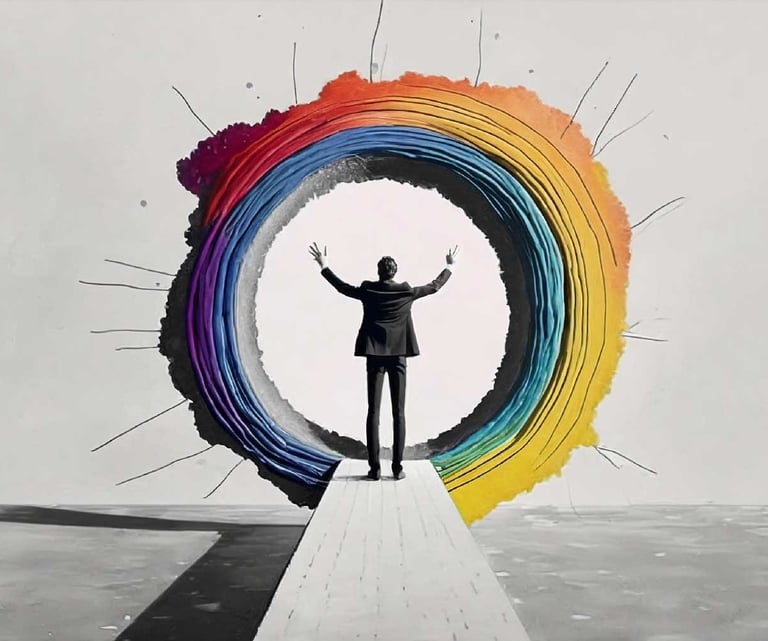

Artistic Vision Meets Technological Precision
Define Project Goals and Target Audience: Understand the project's objectives (e.g., promoting an event, selling a product) and identify the intended audience.
Develop Visual Design Concepts: Brainstorm ideas and translate them into visual concepts through sketches and mockups, considering elements like typography, color schemes, imagery, and layout.
Create Designs for Various Platforms: Produce visuals tailored to specific channels and platforms, such as websites, social media, print materials, or physical signage. Collaborate with Stakeholders: Work closely with clients, marketers, developers, copywriters, and other key stakeholders to incorporate their feedback and ensure the design aligns with the overall project goals. Maintain Brand Consistency: Develop and maintain the brand identity through visual style guides and designing elements like logos, color palettes, and typography.
Visual communication design represents a unique convergence where artistic vision meets technological precision, creating a professional discipline that demands both imaginative thinking and methodical execution. The field requires designers to possess an intuitive understanding of aesthetic principles, color theory, and visual hierarchy, combined with the ability to conceptualize abstract ideas and transform them into compelling visual narratives. This creative foundation manifests in the designer's capacity to brainstorm innovative solutions, develop distinctive visual concepts, and craft messages that resonate emotionally with target audiences. The creative process involves extensive research into audience psychology, cultural contexts, and market trends, followed by ideation sessions where designers explore multiple visual approaches through sketching, mood boarding, and conceptual development. However, creativity alone cannot bring these visions to life in today's digital landscape. Modern visual communication design demands sophisticated technical proficiency across multiple software platforms, from industry-standard applications like Adobe Creative Suite to emerging tools for web development, motion graphics, and interactive media. Designers must master complex technical skills, including typography manipulation, color space management, file optimization for various output methods, and an understanding of printing processes, screen technologies, and digital platforms that will ultimately display their work.
The most successful visual communication designers develop what industry professionals call "creative problem-solving with technical awareness" – the ability to push creative boundaries while remaining grounded in the practical realities of production, distribution, and user interaction. This balance between imagination and implementation, between artistic expression and technical execution, defines the modern visual communication designer as both a creative visionary and a skilled technician, capable of transforming abstract concepts into tangible, impactful visual experiences that function flawlessly across diverse platforms and media.
The seamless integration of creativity and technical skills becomes most apparent in the designer's daily workflow, where artistic vision must be translated into technically sound executions that meet specific project constraints and industry standards. This duality requires designers to think simultaneously as artists and engineers, considering not only the aesthetic impact of their choices but also the technical limitations and possibilities of their chosen medium. For instance, a designer creating a mobile application interface must balance creative visual storytelling with technical considerations such as screen resolution, touch interaction patterns, loading times, and accessibility requirements. Similarly, a packaging designer must merge creative brand expression with technical knowledge of printing processes, material properties, and production costs. This technical-creative synthesis extends to project management and client collaboration, where designers must articulate their creative concepts using technical terminology, create detailed specifications for production teams, and adapt their artistic vision based on technical feedback and constraints.


The Power of Visual Communication
Why Visual Communication Is So Powerful:
Foundation of Relationships: Effective communication is the cornerstone of healthy relationships, fostering trust, empathy, and understanding between individuals, whether in romantic partnerships, families, or friendships.
Driving Social Change: Communication is essential for raising awareness about social issues, mobilizing support for causes, and advocating for policy reforms. Social media, in particular, plays a significant role in empowering communities and giving a voice to marginalized groups.
Building Strong Teams and Leadership: Open and honest communication is crucial for effective teamwork, enhancing collaboration, productivity, and innovation. It allows leaders to inspire and empower their teams, establish trust, and achieve common goals.
Resolving conflicts: Strong communication skills are vital for navigating disagreements, fostering mutual understanding, and finding common ground. Active listening, empathy, and a willingness to compromise can transform conflicts into opportunities for growth and stronger relationships.
Shaping Perceptions and Driving Action: Communication influences how people view the world, their communities, and themselves. By crafting compelling messages and leveraging various communication channels, individuals and organizations can shape public opinion, inspire action, and facilitate positive societal shifts.
Visual communication stands as one of the most powerful forces in our information-driven society, fundamentally transforming how we process, understand, and respond to the world around us. In an era where the average person encounters thousands of visual messages daily, the ability to grab attention has become both an art and a science. Visuals possess an almost magnetic quality that draws the eye faster than any written word, operating on psychological principles that tap directly into our neural pathways. This immediate visual impact serves as the crucial first step in any communication process, creating that split-second window where audiences decide whether to engage or move on. Beyond mere attention-grabbing, visual communication excels at enhancing understanding by breaking down complex concepts into digestible, accessible formats. Where dense paragraphs of text might overwhelm or confuse, a well-designed infographic, diagram, or illustration can illuminate relationships, processes, and hierarchies with remarkable clarity. This enhancement of understanding extends to improved retention, as the human brain is naturally wired to remember visual information more effectively than text alone. Studies consistently show that people recall 65% of visual information three days later, compared to only 10% of purely textual content, making visual communication an invaluable tool for educators, marketers, and anyone seeking to create lasting impact.
The power of visual communication lies in its ability to connect, inform, influence, and empower. As technology continues to advance, our ability to communicate expands, offering ever-greater potential for both individual and collective impact. Companies invest millions in developing visual systems that speak directly to their customers' hearts and minds, understanding that visual consistency across all touchpoints creates a cohesive brand experience that strengthens credibility and market position. Perhaps most importantly in our digital age, visual communication dramatically increases engagement rates across all platforms and mediums. Social media posts with compelling visuals receive significantly more likes, shares, and comments than text-only content, while websites with strong visual hierarchies keep visitors engaged longer and guide them more effectively toward desired actions. This increased engagement translates directly into business success, educational effectiveness, and social impact, making visual communication skills not just valuable but essential in virtually every field and industry. The power of communication lies in its ability to connect, inform, influence, and empower. As technology continues to advance, our ability to communicate expands, offering ever-greater potential for both individual and collective impact.
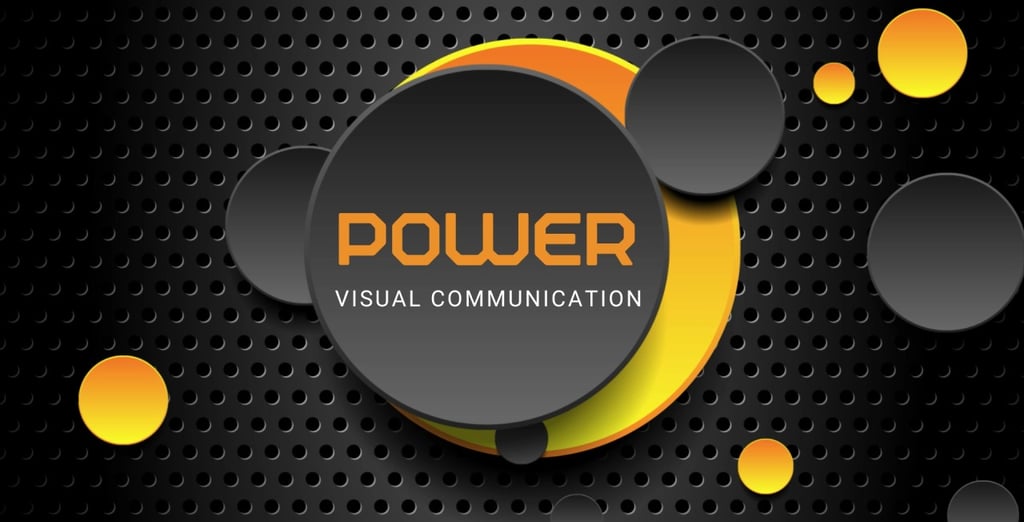

Visual Communication Design and Strategy
Visual Communication Strategy:
Clarity and Understanding: It simplifies complex ideas, making information easier to grasp and remember.
Enhanced Engagement: Visuals grab attention and foster deeper connections and emotional responses with the audience, resulting in increased engagement and potential action.
Stronger Brand Identity: Consistent visual elements like logos, colors, and typography create a cohesive and recognizable brand image, building trust and loyalty.
Improved Information Retention: People are more likely to remember information presented visually, as visuals engage multiple senses and cognitive processes.
Cross-cultural Communication: Visuals can transcend language barriers, making messages accessible to a wider and more diverse audience.
Key Elements of Visual Communication Design:
Color: Sets the mood, emphasizes elements, and influences emotional responses. Different colors evoke different feelings and can be strategically chosen to align with the message.
Typography: Refers to the style, size, and arrangement of text. Font choices, spacing, and hierarchy contribute to readability, tone, and overall aesthetic.
Imagery: Includes photos, illustrations, and icons. Images can tell stories, evoke emotions, and simplify complex ideas.
Layout and Composition: How elements are arranged within a design. A well-organized layout guides the viewer's eye and ensures the message is easy to follow.
Shapes and Lines: Create structure, direct focus, and evoke different feelings or meanings (e.g., curves suggest fluidity, angles suggest stability).
Contrast: Creates visual interest, emphasizes key elements, and improves readability by using differences in color, size, shape, or texture.
Alignment: Arranges elements neatly, creating a sense of order and professionalism.
Texture: Adds depth and visual interest to designs, even in digital contexts.
Developing a Visual Communication Strategy:
Define Your Goals: Identify the purpose of your visual communication (e.g., inform, persuade, educate) and what you want to achieve.
Understand Your Audience: Research your target audience's demographics, interests, cultural background, and how they interact with visual content.
Choose the Right Visuals: Select the most appropriate visual formats (e.g., images, videos, infographics) to convey your message to your specific audience and purpose effectively.
Plan Your Layout and Composition: Arrange elements strategically to create a clear visual hierarchy, guide the viewer's eye, and ensure readability.
Maintain Consistency: Develop and adhere to a consistent visual brand identity across all visual communications, including colors, fonts, logos, and graphic styles.
Tell a Story with Visuals: Structure your visuals to create a narrative that engages the audience and makes the message more memorable.
Prioritize Simplicity and Clarity: Avoid clutter and focus on one main idea per visual, ensuring the message is easily understood.
Ensure Accessibility: Design with accessibility in mind, using high contrast colors, legible fonts, and alternative text for images to ensure your message reaches a diverse audience.
Test and Iterate: Gather feedback and analyze performance metrics to improve and refine your visual communication strategy over time.
Visual communication design and strategy exist in a symbiotic relationship that forms the backbone of all successful visual communications, where neither element can achieve its full potential without the deliberate integration of the other. This partnership begins at the conceptual level, where strategic thinking provides the essential framework that transforms raw creative inspiration into purposeful, targeted communication. Strategy serves as the compass that guides every design decision, from the initial color palette selection to the final typography choices, ensuring that each visual element serves a specific purpose in advancing the overall communication objectives. Without a strategic foundation, even the most aesthetically stunning designs risk becoming mere decoration, failing to connect with an audience or drive desired behaviors. Strategic use of visuals involves deliberately selecting and arranging images, colors, and other graphic elements to achieve specific communication goals. It goes beyond aesthetics to guide audience attention, convey complex information, and evoke emotions. By leveraging the brain's ability to process visuals faster than text, designers can significantly increase engagement and information retention. Key strategic applications include creating visual hierarchies, ensuring brand consistency, employing data visualization, and designing for specific platforms to make information digestible, memorable, and persuasive.
The integration of these disciplines requires designers to think beyond aesthetic preferences and consider deeper questions: What specific response do we want to evoke from our audience? How do cultural contexts influence visual interpretation? What visual metaphors will most effectively communicate complex concepts? How do we balance immediate visual impact with long-term brand consistency? This strategic mindset transforms the design process from intuitive creation to deliberate communication, where every visual choice is evaluated against clearly defined objectives and audience insights. The most effective visual communication emerges when designers fully embrace their role as strategic communicators, using their creative skills not just to make things beautiful, but to make ideas accessible, memorable, and actionable. This approach elevates visual communication from a supporting role to a primary driver of communication success, where thoughtfully crafted visuals become powerful tools for education, persuasion, and connection that achieve measurable results in the real world.


Key Elements of Visual Communication Design and Strategy
Key Elements of Visual Communication Design
Typography: Choosing fonts, sizes, and styles that are legible, visually appealing, and support the overall message.
Color: Utilizing color psychology to evoke specific emotions, draw attention to key areas, and reinforce brand identity.
Imagery: Incorporating photos, illustrations, icons, and other visuals to add depth, clarify ideas, and create a visual narrative.
Layout and composition: Arranging visual elements strategically to create a clear visual hierarchy, guide the viewer's eye, and ensure the message is easily understood.
Visual storytelling: Crafting narratives and conveying emotion and meaning through sequences of images and videos.
Importance and Impact:
Enhanced Clarity: Visuals can break down complex ideas into easily digestible parts, making information more accessible and understandable.
Increased Engagement and Retention: Visuals capture attention, maintain interest, and make information more memorable, leading to better recall and comprehension.
Building Brand Identity: Visual elements such as logos, colors, and typography help create a consistent and recognizable brand image, fostering trust and recognition.
Reaching Diverse Audiences: Visual communication can transcend language barriers, enabling messages to be understood by a broader audience.
Graphic Design: Logos, brochures, advertisements, and website design.
Photography: Product shots, lifestyle images, and advertising imagery.
Video and Animation: Explainer videos, animated commercials, and social media ads.
Data Visualization: Infographics, charts, and graphs to represent complex data visually.
Illustrations and Icons: Visual representations of ideas, objects, or actions used in websites, apps, and educational materials.
Visual communication is storytelling; it's how we communicate information and create experiences across a range of visual mediums. It can be found within design, illustration, photography, art, and advertising; it could be an image, a quote, a campaign, a film, or an animation. Visual communication design is about using the power of visuals to effectively communicate messages, create engaging experiences, and leave a lasting impression. Visual Communication Design is evident in many aspects of our daily lives.
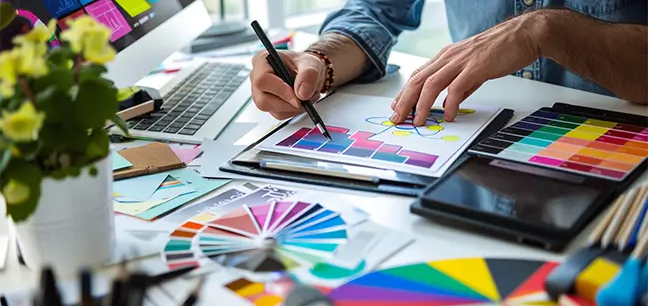

Visual communication design is the process of communicating concepts, information, and feelings to an audience through the use of visual components like images, typography, color, and layout. It blends visual arts and graphic design to create effective messages for various platforms, including branding, websites, motion graphics, and interactive user interfaces. The goal is to simplify complex concepts, capture attention, and facilitate meaningful connections between a creator and their audience. Visual communication design, often used interchangeably with graphic design, is a specialized field that focuses on conveying messages and information through visual elements. Visual communication design strategically uses visuals to communicate ideas, evoke emotions, and tell stories in a way that resonates with a specific audience. Think of it as a blend of art, technology, and communication skills to create impactful visual solutions.
Advertising and Public Relations
Key Functions of Public Relations
PR encompasses a wide range of activities designed to create a positive perception of a client. Core functions include:
Media Relations: Building and maintaining relationships with journalists, editors, and bloggers to secure positive news coverage (earned media).
Crisis Management: Developing and executing communication plans to help an organization prepare for, navigate, and recover from unexpected negative events.
Corporate Communications: Managing internal and external communications to ensure a consistent corporate identity and message.
Content Creation: Writing and disseminating content such as press releases, speeches, blog posts, and social media posts.
Social Media Management: Engaging with the public on social media platforms to strengthen brand visibility and manage online reputation.
Reputation Management: Proactively shaping public perception and protecting a brand's image over time.
Special Events: Coordinating public events like press conferences, product launches, and sponsored functions.
Public Relations vs Advertising: The Importance of PR
Effective public relations is crucial for an organization's success and growth.
Builds credibility and trust: Positive media coverage and authentic communication can significantly enhance public confidence in a brand.
Enhances online presence: Strategic digital PR can increase visibility, improve search engine optimization (SEO), and engage a wider audience.
Manages crises: A strong PR strategy equips a brand to effectively handle challenges, minimize reputational damage, and maintain stakeholder trust.
Supports marketing efforts: By shaping positive public perception, PR makes marketing and sales initiatives more effective. complete control over the message's content, look, and placement.


Advertising is the paid process of communicating information about a product, service, or idea to a target audience to persuade them to take a desired action, such as making a purchase, supporting a cause, or changing their opinion. Common methods include print ads, commercials, online ads on social media and search engines, along with billboards, with objectives ranging from increasing brand awareness and sales to driving traffic or influencing public behavior.
Purpose: To inform, persuade, and remind an audience about a product, service, or cause, with the ultimate goal of influencing behavior or purchase decisions.
Paid Communication: Advertising is a paid form of communication, giving the advertiser control over the message and its placement.
Audience: Advertisers aim to reach specific target audiences to maximize the effectiveness of their message.
Channels: Advertising utilizes various media, both traditional and digital, including newspapers, magazines, TV, radio, billboards, websites, search engines, and social media.
Key Aspects of Advertising
Purpose: To inform, persuade, and remind an audience about a product, service, or cause, with the ultimate goal of influencing behavior or purchase decisions.
Paid Communication: Advertising is a paid form of communication, giving the advertiser control over the message and its placement.
Audience: Advertisers aim to reach specific target audiences to maximize the effectiveness of their message.
Channels: Advertising utilizes various media, both traditional and digital, including newspapers, magazines, TV, radio, billboards, websites, search engines, and social media.
Public Relations vs. Advertising
While both PR and advertising promote a client, their methods, costs, and levels of control differ significantly. Advertising media type primarily uses "earned media," such as news coverage generated through media pitches and press releases, along with "paid media," where a company pays for ad space or airtime. This may be viewed as less credible because the audience knows the company paid for the message. Credibility tends to be higher because the message is delivered by a trusted third party, like a journalist.
Public Relations (PR) is a strategic communication process that builds and manages the public image and reputation of an organization, individual, or brand. PR professionals strive to cultivate mutually beneficial relationships with key stakeholders, including the media, customers, employees, investors, and the broader public.
Transformative Power of Visual Communication
The transformative power of visual communication extends far beyond individual comprehension to reshape entire landscapes of human interaction and connection. The power of communication lies in its ability to connect, inform, influence, and empower. As technology continues to advance, our ability to communicate expands, offering ever-greater potential for both individual and collective impact. Visual elements serve as universal languages that transcend cultural and linguistic boundaries, enabling global communication in ways that words alone cannot achieve. A simple icon, color scheme, or visual metaphor can convey meaning across continents, making visual communication an essential tool in our increasingly interconnected world. This universal quality becomes particularly powerful when combined with the medium's ability to build emotional connections, as carefully crafted visuals can evoke feelings, memories, and responses that purely textual communication struggles to achieve. The emotional resonance created through visual storytelling becomes the foundation for stronger brand identities, where consistent visual languages create recognition, trust, and loyalty among audiences.
Visual communication reshapes how we learn, interact, and perceive the world on an individual, business, and societal level.
Transformation for Individuals
Enhances learning and understanding: Our brains process images up to 60,000 times faster than text, and many people are visual learners. Visual aids like diagrams, charts, and educational videos can increase retention and make complex topics easier to grasp.
Builds stronger connections: Visuals, such as photos and videos, help us communicate on an emotional level, fostering empathy and shared purpose. This is valuable for conveying personal stories and building relationships in both personal and professional contexts.
Increases accessibility: Visual supports like picture-based schedules and diagrams help individuals with communication needs establish routines and express themselves more easily. They can also help overcome language barriers in a globalized world.
Boosts creativity: Engaging with visuals, from mind maps to illustrations, can inspire new ideas and fresh perspectives. Sketching out concepts, for example, can lead to innovative solutions that text-only communication might miss.
Transformation for Business
Strengthens brand identity: A consistent visual language, including logos, colors, and typography, helps to build brand recognition and create a lasting impression with customers. This consistency fosters trust and loyalty.
Improves communication and productivity: In the modern, often remote, workplace, visuals can break down complex information into digestible, engaging content that employees retain better than plain text. This accelerates decision-making and reduces the need for lengthy meetings.
Increases engagement and conversions: High-quality visual content, such as product photos, infographics, and videos, is proven to boost customer engagement. In marketing and e-commerce, this translates to increased sales, brand visibility, and a higher return on investment (ROI).
Elevates the customer experience: A well-designed user experience (UX) makes websites and apps more intuitive and engaging. Visuals can guide users through processes, explain products, and enhance customer satisfaction.
Transformation for Society
Drives social and political change: Powerful visual campaigns can rally support for social causes like environmental sustainability, human rights, and public health. Memorable images and infographics can raise awareness and inspire collective action.
Makes complex information accessible: Infographics and data visualizations are critical for presenting dense information in an easily digestible format, from scientific data to election statistics. This helps the public stay informed and can combat misinformation.
Shapes culture and perception: Visuals define trends, represent cultural identity, and influence public opinion. Through art, media, and design, visual communication can challenge norms and drive important conversations.
Supports journalism and education: Interactive maps, charts, and videos have become essential for news reporting and education, providing context and enhancing the storytelling approach. This makes information more engaging and facts easier to absorb.
The transformative power of visual communication lies in its ability to simplify complex information, evoke emotion, and drive engagement across diverse audiences. By leveraging visuals, from ancient cave paintings to modern infographics and videos, humans can bypass language barriers and create deeper, more memorable connections.
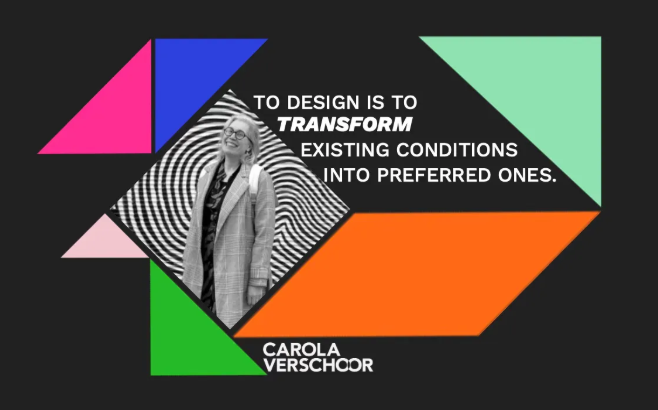

Visual Communication Design Services
Design Consultation
Get expert advice on visual strategies tailored to elevate your brand and engage your audience.
Brand Identity
Craft a unique visual identity that resonates with your audience and reflects your brand values.
Transform your ideas into compelling visuals that capture attention and drive engagement effectively.
Compelling Visuals
Blending Creativity and Strategy to Enhance Visual Communication Design!